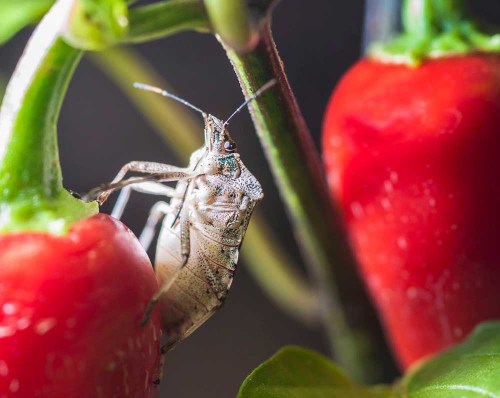Brown marmorated stink bug outbreak threatens Oregon crops
Published 5:30 pm Monday, November 14, 2022

- A brown marmorated stink bug feeds on a red pepper plant.
CORVALLIS — An outbreak of invasive brown marmorated stink bugs this year poses a serious threat to crops, especially hazelnuts, according to Oregon State University specialists.
The stink bug population is exploding in 2022, topping “anything seen in Oregon for at least five years,” according to OSU.
Trending
“There has been a lot of damaging populations of (brown marmorated stink bug) in hazelnut orchards. Growers use preventative measures, so we’re surprised we’ve seen so many,” said Nik Wiman, an associate professor in the College of Agricultural Sciences.
It is not yet clear why the population is booming, Wiman said. The unusually wet spring most likely contributed to the population spike, but the increase could also be part of a natural cycle. The stink bug population varies year to year depending on climatic factors.
Some researchers project the population may increase in the future if changing weather patterns increase the amount of suitable habitat for the stink bugs in the U.S.
One study, led by Washington State University entomologist Javier Gutierrez Illan and published in the journal Pest Management Science, found the distribution of stink bugs is changing and likely will change more in the future.
The shield-shaped stink bug — named for the smelly odor it emits when crushed — is native to Asia. It was introduced to the U.S. in the late 1990s, most likely by ship. The invasive pest spread from the East Coast across the country, landing in Oregon in 2004.
According to OSU, the “generalist” pest feeds on at least 170 plant species, including vegetables, pears, apples, hazelnuts and ornamentals.
Trending
Oregon’s hazelnut industry, valued at $132 million in 2020, is among the crops hardest hit by the stink bug, according to the state Department of Agriculture. The insect also is a threat to hazelnuts in Italy, the country of Georgia and Turkey, the world’s leader in hazelnut production.
Wiman, of OSU, is researching alternative, or non-chemical, practices for controlling the stink bugs, including using biological control, habitat manipulation, trap crops and barriers.
One promising biological approach involves using a beneficial insect — the samurai wasp, or Trissolcus japonicus — to help keep stink bugs under control. The samurai wasp is native to parts of Asia where it naturally keeps the indigenous brown marmorated stink bug population in check.
The parasitic wasp hunts for the egg masses of the stink bug and lays its egg inside each stink bug egg in the mass. The wasp larva develops inside the egg, killing the stink bug in the process, then chews its way out.
The state Department of Agriculture is now leading the biological control effort to reduce the stink bug population using the samurai wasp.
Researchers encourage farmers to help with the samurai wasp research by collecting brown marmorated stink bug egg masses and reporting them to OSU.
Earlier this fall, Gutierrez Illan of WSU said growers also should familiarize themselves with the stink bug, even if they have never had the pest in their fields yet.









